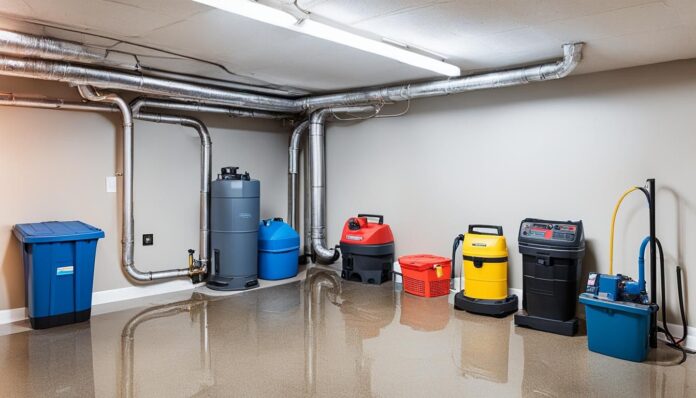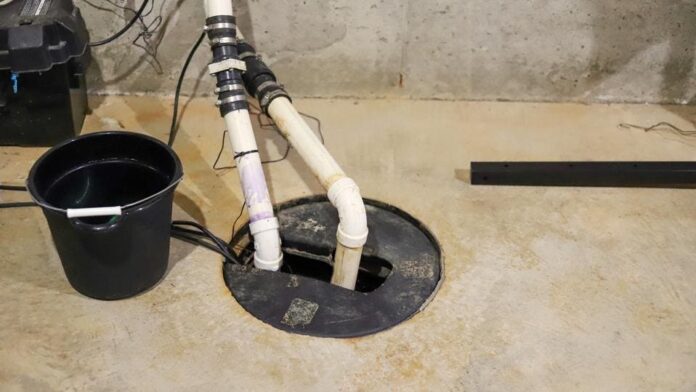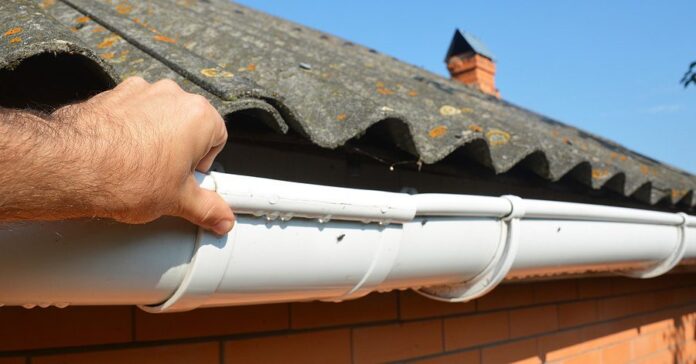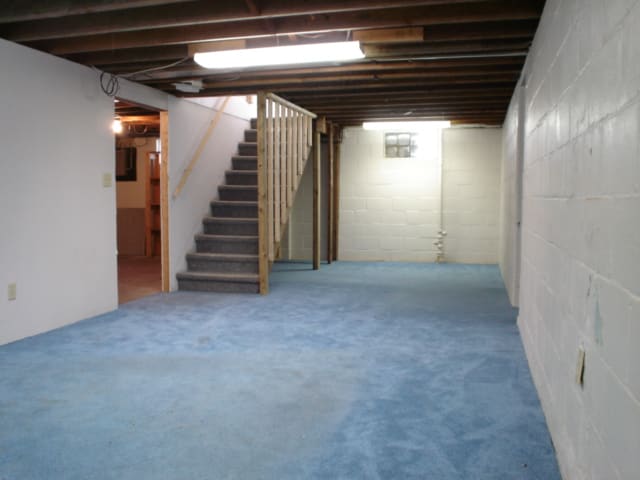Every homeowner knows the unsettling feeling that floods their mind when storms threaten to drench their sanctuary. When it rains, it pours, and for many, it seeps into the basement, often wreaking havoc that’s not just inconvenient but can spiral into costly repairs and health issues.
Approximately 98% of basements will face some form of water intrusion during their lifespan, emphasizing the urgent necessity for effective techniques in water damage prevention. This is not merely about maintaining property value; it’s about ensuring a safe haven for families.
The journey to a dry basement starts with awareness and action—learning the best ways to keep it dry and free from water damage can transform an often neglected area into a functional space that enhances home comfort while curbing risks related to mold and moisture.
By embracing waterproofing solutions, robust moisture control, and comprehensive strategies, any homeowner can reclaim their basement as a place of safety and practicality.
Key Takeaways
- Understanding the importance of basement safety in protecting home value.
- Recognizing common causes of water intrusion for proactive prevention.
- Implementing waterproofing basement strategies to mitigate damage.
- Utilizing moisture control techniques to enhance air quality.
- Being aware of the necessity of ongoing maintenance and assessment.
The Causes of Water Damage
Understanding the basement water damage causes is crucial for any homeowner striving to maintain a dry and functional space. Identifying different sources of water intrusion will help in implementing effective prevention strategies.
To address these issues effectively, consider consulting with basement waterproofing contractors who specialize in identifying and remedying the sources of water intrusion.
Identifying Common Sources of Water Intrusion
Water intrusion can originate from various sources, often linked to environmental conditions and construction flaws. Common sources include:
- Poor landscaping that allows rainwater and melting snow to accumulate around the foundation.
- Cracks in walls and floors, creating pathways for groundwater to seep in.
- Inadequate drainage systems designed to divert water away from the home.
Each of these factors contributes significantly to the potential for water damage, leading to costly repairs and potential health issues.
The Role of Humidity and Condensation
Excessive humidity in basements can lead to condensation issues that exacerbate the risk of water damage. When warm air meets cold surfaces, moisture forms, which can create damp environments ideal for mold and mildew growth. To mitigate these risks:
- Monitor indoor humidity levels regularly using a hygrometer.
- Ensure proper ventilation throughout the basement.
- Utilize dehumidifiers to maintain optimal humidity levels.
These strategies are essential in preventing not just structural issues but also health risks associated with high humidity and condensation.
Best Ways to Keep Your Basement Dry and Free from Water Damage
Protecting a basement from water damage requires a multi-faceted approach that includes various techniques and regular maintenance. By employing effective methods such as waterproofing, sump pump installation, and proper drainage, homeowners can significantly reduce the risk of moisture intrusion. Each of these strategies plays a vital role in ensuring a dry and safe basement environment.
Waterproofing Your Basement
Waterproofing your basement is essential to prevent water from seeping through walls and floors. This process typically involves applying waterproof coatings on surfaces that act as a barrier against moisture.
Additionally, it is advisable to inspect for any cracks in walls or floors that may require sealing. Investing in high-quality waterproofing solutions can provide long-lasting protection against water infiltration.
Utilizing Sump Pump Installation
One effective defense against basement flooding is the installation of a sump pump. A sump pump collects water that accumulates in a designated pit, pumping it away from the home’s foundation. This installation is especially crucial for basements in flood-prone areas. Regular maintenance checks ensure that it operates efficiently when needed.
Implementing Effective Drainage Solutions
Effective drainage solutions are pivotal in directing excess water away from the foundation. Installing a French drain system can be particularly helpful, as it collects and redirects groundwater efficiently. Proper grading of the landscape also ensures that water flows away, reducing the likelihood of pooling around the foundation.
Maintaining Your Gutter System and Landscape Grading
Gutter maintenance is another critical aspect of basement moisture control. Keeping gutters clean prevents water from overflowing and saturating the soil near the foundation.
Regular inspection and repair of gutters, along with ensuring that downspouts direct water at least six feet away from the house, can significantly mitigate the risk of water damage. Proper landscape grading further enhances drainage efficiency.
Controlling Moisture with Dehumidifiers and Vapor Barriers
Controlling indoor humidity levels is vital to keeping basements dry. Utilizing dehumidifiers helps in removing excess moisture from the air, creating a healthier atmosphere.
Implementing vapor barriers in walls or floors can also prevent moisture from entering the basement, making it easier to maintain optimal humidity levels.
| Moisture Control Techniques | Description | Benefits |
| Waterproofing | Applying coatings to prevent water infiltration | Enhanced protection against water damage |
| Sump Pump Installation | Mechanical removal of accumulated water | Prevention of flooding in high-risk areas |
| Drainage Solutions | Systems like French drains to redirect water | Reduced water accumulation around the foundation |
| Gutter Maintenance | Regular cleaning and repair of gutters | Prevention of water overflow and foundation saturation |
| Moisture Control | Using dehumidifiers and vapor barriers | Optimal humidity levels and improved air quality |
Conclusion
Achieving a dry basement is essential for homeowners who want to protect their property and promote a healthy living environment. By taking proactive steps in basement moisture management, they can prevent water damage that might compromise the integrity of their homes.
Addressing the underlying causes of moisture allows for effective implementation of water damage solutions, ensuring that basements remain not only functional but also safe.
Utilizing waterproofing techniques, establishing effective drainage systems, and conducting regular maintenance are critical components in the quest for a dry basement.
By investing time and resources into these strategies, homeowners safeguard their financial investments and enhance their family’s well-being, ultimately creating a space that can serve multiple purposes without the threat of water intrusion.
With diligent attention to detail and commitment to moisture control, anyone can create a reliable barrier against the elements. Prioritizing proper methods today can make all the difference in maintaining a long-lasting, dry basement for years to come.













